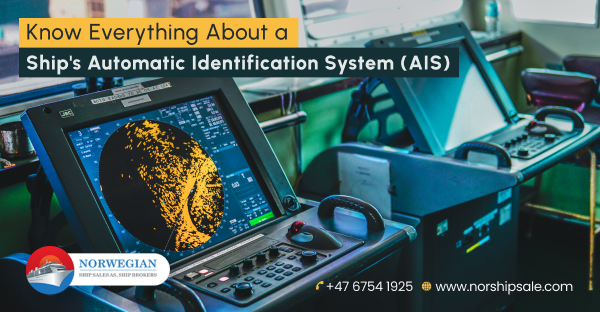When a ship is sailing on the sea, the crew must be aware of other vessels that are sailing in the vicinity. It is the Automatic Identification System (AIS) that performs this task on the ship. When the vessel is equipped with AIS, its location is displayed on the screens of the vessels that are plying in the vicinity, thereby preventing a collision. Now, in the absence of AIS, the exchange of information does not take place, and the ship can collide with other ships travelling in waters where there are no boundaries or markings. So, if you are considering investing in any ferries for sale, you should ensure that the vessel you are looking to purchase is fitted with the AIS system. Continue to read our blog to know more about AIS, or the Automatic Identification System.

What Is AIS?
AIS or the Automatic Identification system, is an automated, self-regulating tracking system that shows nearby vessels plying in the sea. The mobile maritime band of the VHF broadcast transponder system is where it works.
If your ship is equipped with AIS, it will also appear on screens inside other vessels that are in the vicinity. If not installed or turned on, the sharing of information across ships through AIS will not be possible.
Until the Master determines that it must be turned off for reasons related to security or otherwise, the onboard AIS must always be active. The AIS operates in a continuous, autonomous mode.
What Is the Purpose of AIS?
To identify ships and important navigational markings, it is installed in ships. However, it shouldn’t be utilized to avert collisions as it is merely a navigational aid. AIS is used by onshore VTS, or Vessel Traffic Services, to recognise, track, and monitor seaborne vessels. AIS is also employed by the Panama Canal to provide data regarding wind and rain along the canal.
Types of AIS
There are two types of AIS:
- Class A: Required for ships carrying passengers and having a gross tonnage of 300 GT or more when traveling internationally.
- Class B: Offers a restricted set of features and is designed for vessels that are used primarily for watercraft like recreational boats.
How Does It Work?
A typical maritime electronic communications link to onboard display and sensor systems, 1 VHF DSC receiver, 2 VHF TDMA receivers, and 1 VHF transmitter make up the AIS system. The normal sources of position and time data are obtained from external or integrated GPS receivers. Through common marine data connections, the AIS electronically retrieves additional data from shipboard devices.
Each station sends and receives over two radio channels, even though only one is required in order to prevent interference and loss of communication from ships. An AIS station’s position report fits with any of the 2250 time slots that are allocated every minute. To prevent broadcasts during the same time slot from overlapping, AIS stations keep synchronizing continuously.
Conclusion
In conclusion, the AIS only enhances navigational safety by helping the OOW/ VTS, or other entities. As AIS is typically linked to ship bridge systems or multifunctional displays, it is also quite simple to install; however, installing a standalone system is as simple as putting in a few cables and turning on the socket. So, when it comes to scouting for your favourite vessel in ferries on sale, make sure the vessel is equipped with an AIS for enhanced safety.

